After months of discussion and planning regarding our trip north to Canada and onto Alaska, we are ready to launch. It has taken a fair amount of time to move back into the fifth wheel. It is surprising how much stuff we have and that it all fits. We started by cleaning out everything and re-sorting with our plan to go North in mind. Last year we went South and West. Of course, we had warm and then hot temperatures to deal with. We are starting our journey a month earlier than in the past few years. Traveling North requires us to think more about cool and even cold temperatures. We have adjusted our clothing and gear to be prepared for Canada and Alaska.
When we returned last October, we made a decision to add permanent solar collectors to the roof, therefore, making us more independent and able to wild camp or boondock. Our preparation included adding four 100 amp solar panels and a 1000 amp inverter. After some investigation, we were able to install the system and operate it. So far the system worked great parked at our home. The real test is to see how it functions on the road. I will update our progress as soon as we have information to report.
Well, we were all set to leave. We had done all the last minute stuff, crossed everything off our extensive list and all was a ready to drive away. I climbed into the truck. The truck would not start. The truck was just serviced at the Ford dealership; changing the oil, the coolant, the fuel filters and replaced the rear brakes and calipers. I confidently left the dealership feeling 100%. Dealing with our RV and truck is like problem-solving 101. It requires some thought thru trial and error to arrive at a solution. I was able to easily jump the battery, feeling a new battery was in our future. Of course, batteries can fail at any time, not always known. Thinking that going over to Ford dealership would be a ½ day project, I opted for Advanced Auto. A very knowledgeable associate was available to check both batteries. The first battery was weak and failing. I was glad to confirm the solution was simple. Just spend money. To be done with the issue for this trip, it was decided to change both batteries. This was completed in about 45 minutes and returned home to load the Rig.
We were still within our planned time frame and headed north. 305 miles later we were in Hahira, Georgia; setting up at Cain’s Creek RV campground. It’s about 1 and ½ miles from Interstate 75, easy in and out with pull-troughs and full hookups. It’s good to be back on the road again.
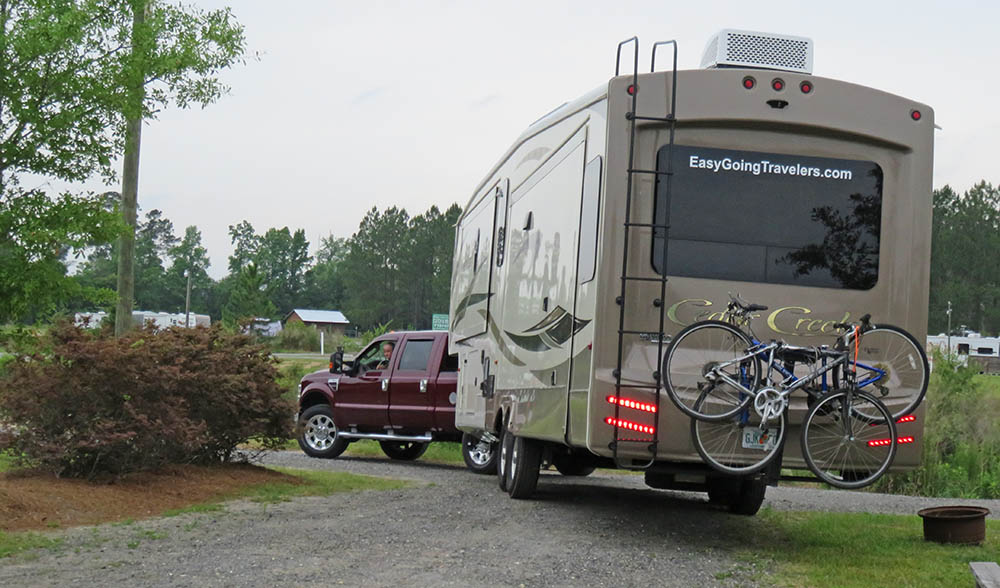
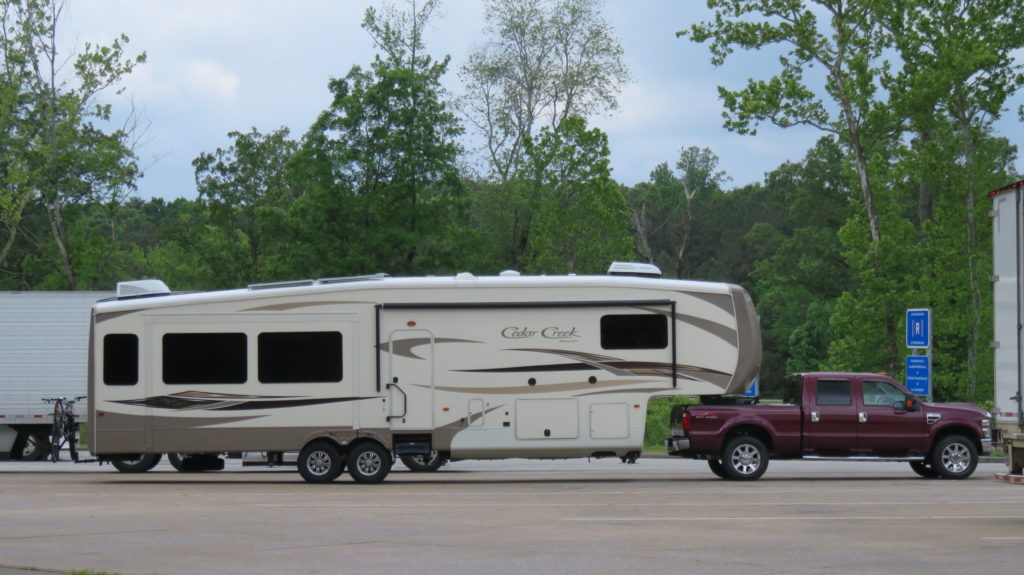
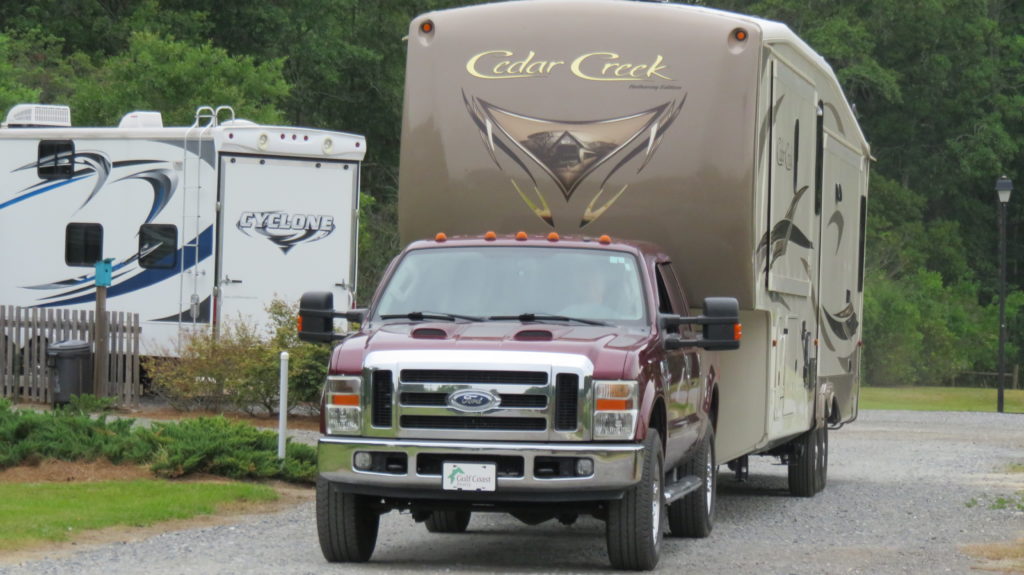

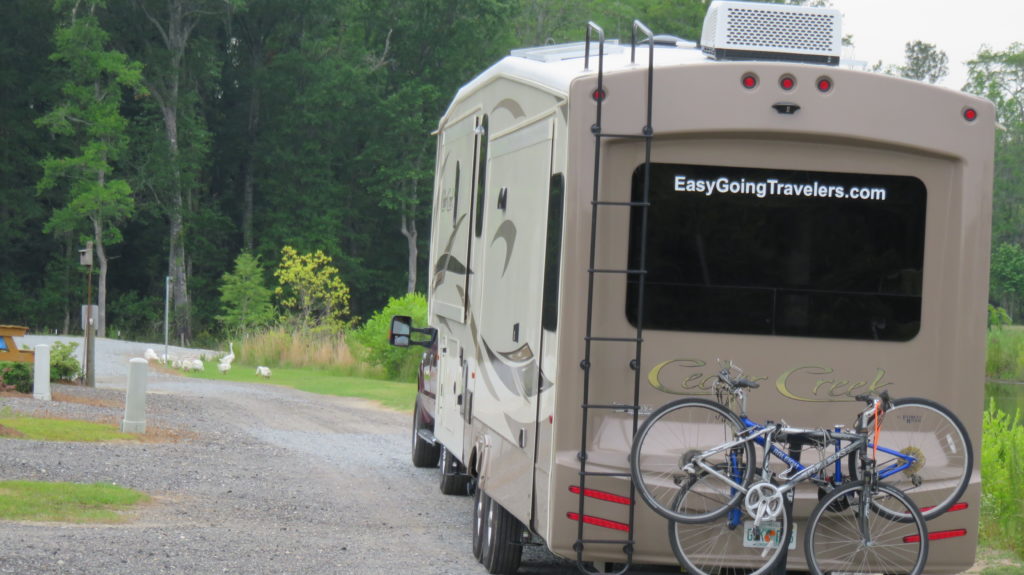
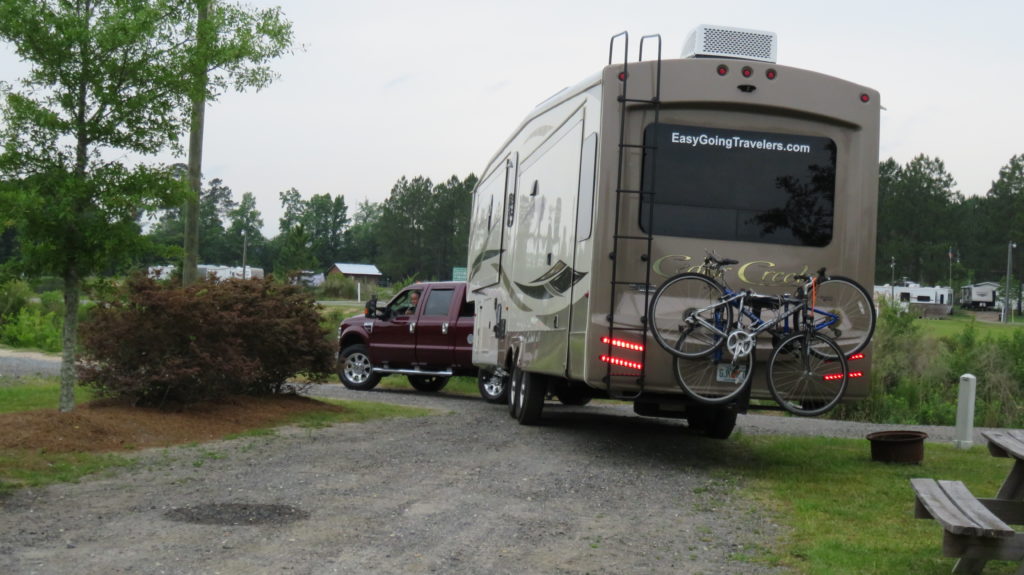
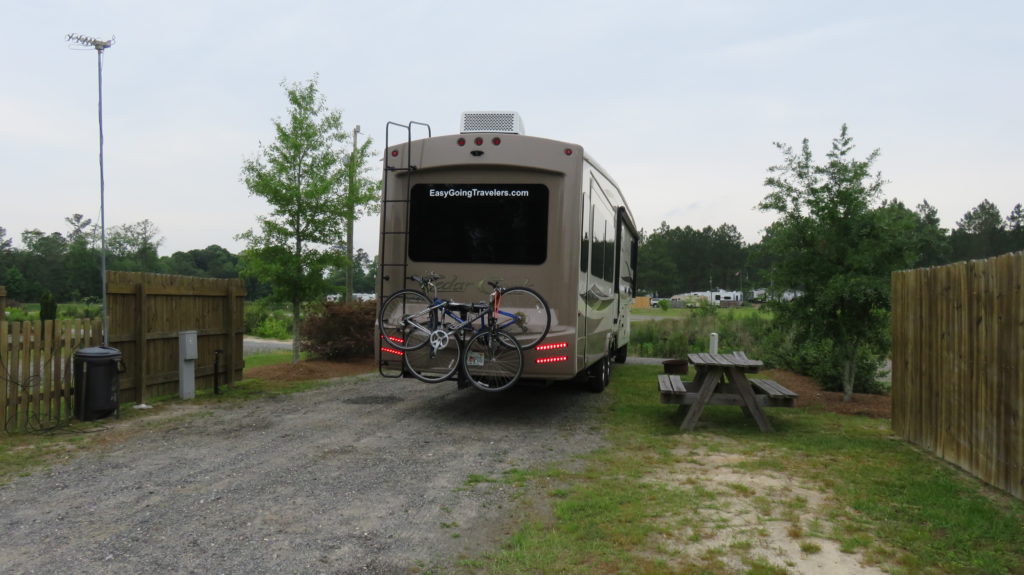
Comments
This is an awesome website.
You’ve done a nice job and convinced us to make a trip to Alaska.
We have a Sierra 377FLIK 5th wheel towed by a 2500HD GMC Sierra (diesel).
We don’t have a generator onboard, but am thinking about how to travel with a 5500watt generator in the truck bed.
Maybe a little too loud.
Did you find that you needed a generator on the way to Alaska?
Or could you make it between campgrounds to plug in?
We have a residential fridge that runs off an inverter while traveling, but needs to be plugged in every day or so (limit of batteries).
Hello Kevin,
We have, unfortunately, had limited internet for a while and did not get on our site to see your message. I will have Brad comment on your questions as soon as he is able. He has set up all our off-market systems to help us be able to be off-the-grid. Keep your dream alive to visit Alaska. It is WOW!!!!!
Best Regards, Cathy
Those large generator make to much noise. We have a pair of Honda’s that generates 30 amps and we used them to charge our batteries on cloudy days. I installed 4 100 amp solar collectors I bought on amazon and had good luck keeping my 4 6 volt golf cart batteries charged. We also have a residential refrigerator. We were able to find a campground when ever we needed. Most campground had 30 amp electric. During fishing runs you need to plan because every campground is full. We had trouble in Seward finding a site and had to wait for 5 days to get a reservation. There are a lot of new generators for much less cost than the Honda. I would consider the best charger possible as part of the answer. A 4 cycle Charger could charge your batteries faster. The factory installed chargers are less effective and take a long time to charge. You can boondock almost any where in Alaska. You might recover a big part of the cost of a generator by boondocking. The trip was amazing and we would recommend doing it.